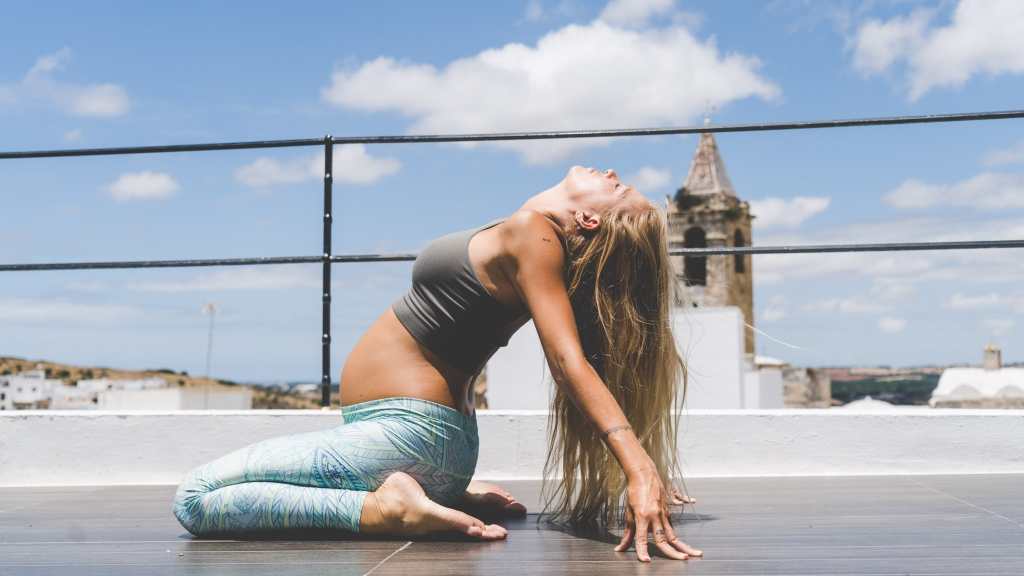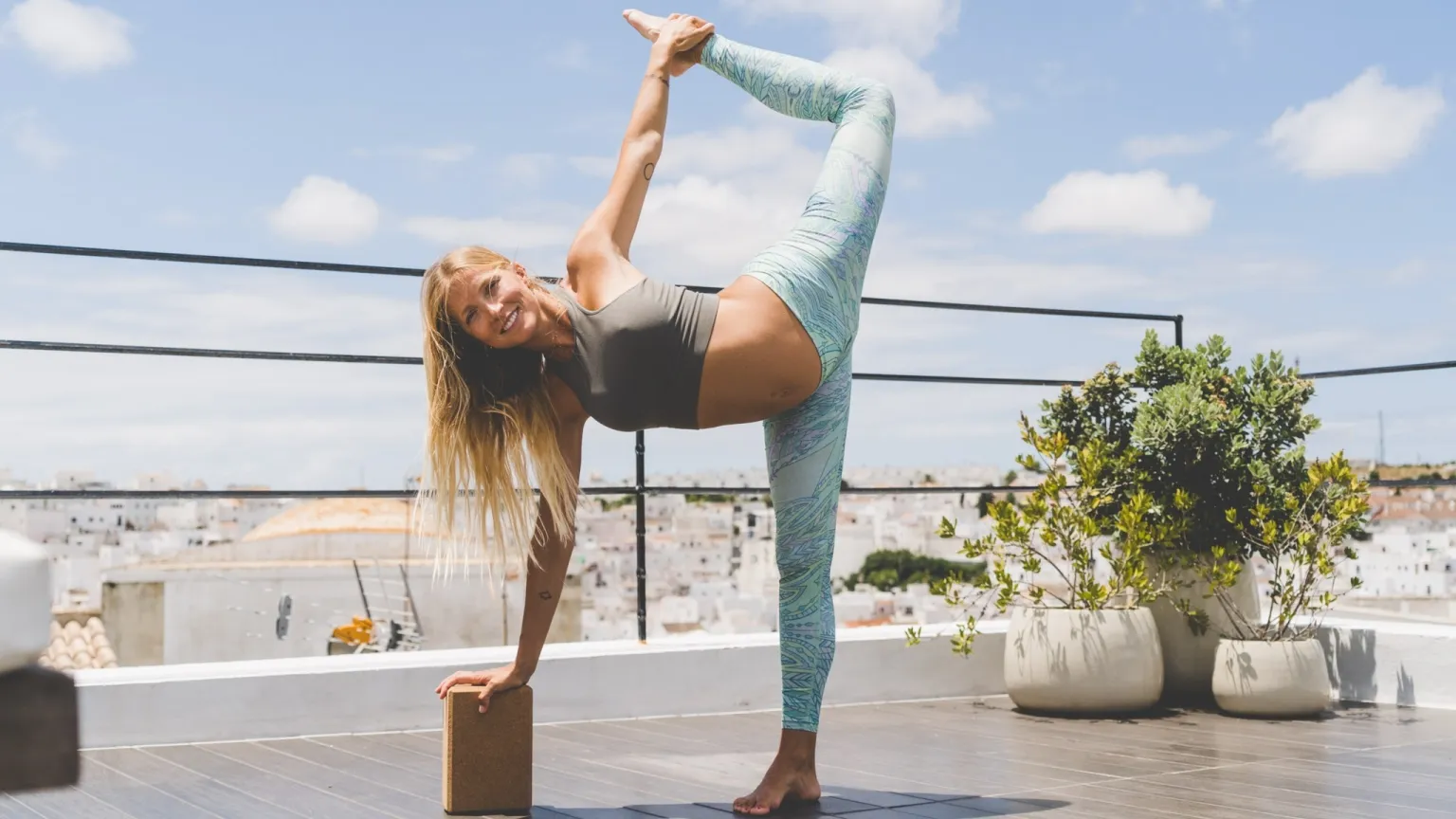“Nothing compares to the power, courage, and beauty of a mother’s love,” says Lucía Liencres, a mother of two and founder of an online yoga studio in Spanish that teaches classes for pregnant women to help them cope with the changes and relieves symptoms of each trimester of pregnancy.
“Prenatal yoga, whether in person or online, introduces adaptations to pregnancy in the practice of this Hindu discipline, which encompasses a philosophy of life, by combining ‘asanas’ (body postures), breathing and meditation, we balance the body with the mind,” she explains.
“Being pregnant is a time when you should move and maintain a much healthier lifestyle. Yoga helps improve physical and emotional well-being during the hardest months of pregnancy, and allows you to relax and live happily in the last stage before giving birth,” says Liencres.

Practicing yoga brings well-being and benefits to women’s health during pregnancy, “one of the most special stages that a woman experiences and which is the perfect time to take care of herself,” according to Lucía Liencres, a teacher of three types of yoga: Ashtanga, Rocket, and Yin, which are part of this set of physical-mental disciplines originally from India.
She points out that there are numerous types of yoga, as well as exercises, techniques, and postures that help us achieve greater physical and mental control, “with great benefits,” and clarifies that yoga is for everyone: beginners or advanced, children or adults, men and women, and “also for pregnant women,” she emphasizes.
Liencres is a mother of two children and has founded and runs the Spanish-language online yoga studio, which offers “practicing yoga from home and feeling the same as in a (face-to-face) yoga center and is the first to offer yoga classes for pregnant women,” she says.
“During the months of pregnancy, we not only experience changes on a physical level, but also on an emotional level, both inside and out. Precisely, all our worries, tensions, or accumulated stress are transmitted to the baby,” she explains.
That is why it is so important to continue taking care of yourself during pregnancy and to keep your body and mind healthy and strong. “Yoga can help us cope better with these changes and alleviate the symptoms of each trimester, or even prevent them,” she points out.

If you already have a regular and constant yoga practice, you can start practicing this discipline during the first trimester of pregnancy, “if your body asks for it, although it is not advisable, since it is the trimester in which there are more risks,” she points out.
“If you are a beginner and have not practiced before, I recommend waiting until the second trimester and doing gentle yoga exercises for pregnant women until then,” she suggests.
WELL-BEING, FLEXIBILITY, AND EMOTIONAL CONTROL
“Prenatal yoga, which requires making some changes to your regular yoga practice and adapting body postures or ‘asanas’ to the pregnancy and each woman, can help a lot to relax for childbirth, to better manage emotions, and to increase flexibility,” Liencres points out.
“Likewise, yoga for pregnant women helps improve postpartum recovery, relieve labor pains, improve the circulatory system, stay fit, create a special connection with the body and the baby, relax, and better manage emotions,” she explains to Efe.
As for which type of yoga is best for pregnancy, Liencres points out that hatha yoga is at the top of the list, “because it consists of static postures that can be done safely and without forcing, and prenatal yoga because it adapts the practice to each trimester of pregnancy,” she explains.
The founder of THECLASSyoga advises pregnant women not to do postures that compress the abdomen or take up space for the baby (certain bending or twisting postures), as well as postures that require very intense stretching of the abdomen.
On the other hand, very deep extension postures can aggravate abdominal diastasis (separation of the rectus abdominis muscles) when the mother’s belly is already quite large.
BREATHING AND POSTURES FOR PREGNANT WOMEN
Holding your breath for a long time can also be inadvisable, especially during breathing exercises or ‘pranayamas’, according to Liencres.
“An alternative could be to hold your breath for short periods or increase the number of breaths per minute to relax your mind and regulate your heart rate,” he says.
Sometimes, “simply maintaining a natural breathing flow is the best channel of communication with your baby,” says this expert, adding that it is necessary to “always carry a bottle of water to hydrate after practice.”
“Likewise, whenever necessary, you can use supports or accessories, such as blocks, belts, or bolsters (yoga pillows),” she explains.
Every woman is different, and therefore needs practices focused on her particular needs: “Some will need more rest, with more static postures, and others will need hip-opening or flexion ‘asanas’,” she advises.
“The most important thing is to stop and listen to your body, which knows exactly what it needs at any given moment, and if in doubt, consult a yoga teacher or a doctor, who can guide you regarding the most appropriate postures for each stage of pregnancy,” she recommends.
“This professional will be able to advise you on what type of yoga is best for you, and which postures you can and cannot do,” she stresses.
“In online or in-person yoga classes for pregnant women, a teacher modifies and adapts the practice to each specific case and focuses on each trimester of pregnancy,” she adds.
“In any case, during the months of pregnancy, it is preferable that, instead of innovating or doing an intense type of yoga, the pregnant woman practices and adapts the postures she usually practices to her needs or does certain variations of those postures she already knows,” according to Liencres.
She also points out that one of the simplest postures in prenatal yoga, and other types of yoga, “is the butterfly pose or ‘baddha konasana’ in Sanskrit.”
“This posture works on opening the hips, which is very useful for making the pelvic floor more flexible and preparing for childbirth, as well as stretching the muscles of the lower trunk, making the hips and knees more flexible, and improving body posture and circulation,” she emphasizes.
To do the butterfly pose, “sit on the mat with your knees bent, so that the soles of your feet are together. Bring your heels as close to your coccyx as possible, and let yourself fall forward with your back straight,” concludes Lucía.























+ There are no comments
Add yours